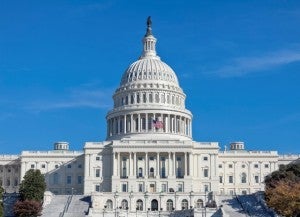This week, during a special hearing by the Joint Economic Committee of Congress, legislators gathered a cross-section of industry, policy, and environmental leaders to testify about the economic impacts of increased natural gas development. I was one of the witnesses, on behalf of Environmental Defense Fund, arguing that natural gas can only be a net winner for the economy if government acts fast to limit the impacts of new hydrocarbon development on air, water, and the global climate.
There is no question that unconventional gas development is lowering energy costs, creating new jobs, and supporting more domestic manufacturing. But it also poses real and substantial risks to public health and the environment – as well as a growing threat to the industry’s social license to operate. Continued expansion of U.S. gas development must be balanced with a strong commitment to protect against these impacts.
The congressional committee of both senators and representatives exhibited sharply differing perspectives on expanding natural gas regulation. The core question before all levels of government is whether the appropriate steps are being taken to implement and enforce the regulations necessary to minimize the risks. The answer: not yet.
The threats are real, but so are solutions.
It is well understood by industry and regulators alike that poor well construction and spills of chemicals or wastewater at the well site, or in transit, can pollute water sources. Inspection records in states like Texas and Ohio clearly show accidents during the development of oil and gas and the transport of wastewater from these activities has led to groundwater contamination. Looking at air impacts, intensive shale-gas development in Pinedale, Wyoming, for example, has caused the small town to experience smog concentrations comparable to those of Los Angeles. Similar air quality deterioration has been discovered elsewhere in the state’s Upper Green River Basin.
Beyond localized impacts on air and water, there are serious global climate implications associated with gas development. Unburned natural gas is mostly methane, a greenhouse gas 84 times more potent than carbon dioxide in the first 20 years after it is released. Thus, methane emissions from across the gas supply chain threaten to null the climate benefits natural gas has over coal.
The oil and gas sector is the largest industrial source of methane emissions, and new scientific research—some coordinated by EDF in cooperation with roughly 100 academic institutions, researchers, and industry representatives and some led by others—is increasing our understanding of the magnitude of methane emissions. Though research is ongoing, we know enough to say that there is much that can and should be done right away – and that the costs of cutting emissions are minimal.
A recent cost analysis by ICF International found that by using existing technologies, a 40 percent reduction in methane emissions from the oil and gas sector could be achieved over the next five years at a cost of less than 1 penny per thousand cubic feet of natural gas produced. That’s out of current market value of gas of roughly $4 to $5. Low-cost reductions of this magnitude go a long way toward ensuring expanded natural gas production will not be a net loss for the environment.
The role of regulation
Action to require reductions of methane is needed now. The White House recently announced a strategy for reducing methane emissions nationwide, part of which requires the Environmental Protection Agency (EPA) to decide whether and how to regulate emissions from oil and gas development. Likewise, the Administration’s methane reduction strategy calls on the Bureau of Land Management (BLM) to take steps to reduce air pollution and methane emissions from production on federal lands.
States, however, are not waiting for the federal government to act.
Earlier this year, Colorado put in place the nation’s first and most ambitious rules to directly reduce methane, as well as smog-forming Volatile Organic Compounds (VOCs) from oil and gas development. The rule’s impact is far-reaching and removes the equivalent yearly amount of VOCs emissions produced by all of the state’s cars and trucks. Regulators should note that some of the region’s largest oil and gas companies supported those rules. Recognizing the growing public concern about the environmental and public health impacts of oil and gas-related emissions, industry actually helped make the case that reducing methane and VOCs could be done cost effectively, with no loss of jobs or productivity.
Colorado isn’t alone. Stronger leak detection and repair programs put in place in Wyoming and Ohio also signal to regulators that states are willing to step up to the plate and make smart decisions about protecting their communities and climate from the impacts of oil and gas development.
Our experience working with the states give us the confidence that there is a growing realization that the problems of methane emissions, as well as other air and water concerns from oil and gas development, can and should be addressed. And this week’s hearing by Congressional Joint Economic Committee further amplified this as a critical issue impacting our nation’s future, underscoring the need for new regulatory measures to ensure that the current gas development boom is not a bust for communities and the climate.










